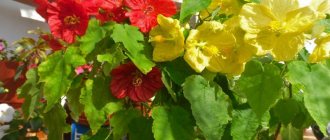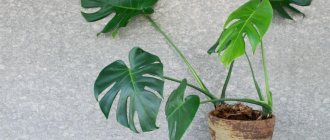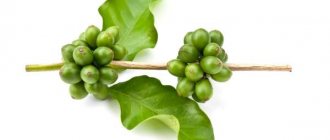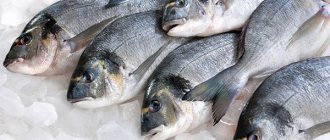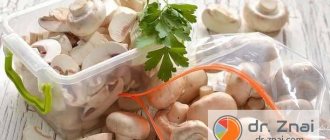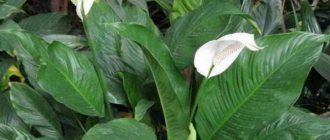Description
Hydrangea is a plant from the hydrangea family of the same name. There are about a hundred species and even more varieties in the genus of culture. These plants in the natural environment and in gardens are represented by small trees, shrubs and vines. Most species of the genus Hydrangea are found in the wild in North America and the Far East, however, the perennial crop has become widespread throughout the world.
The beautiful plant got its name from a princess of the Holy Roman Empire. Later, botanists gave the scientific name Hydrangea, translated from Latin meaning “vessel of water.” This analogy of the botanical name is due to the high moisture-loving nature of the ornamental crop. In Asian countries you can find another unofficial name for hydrangea – “adzisai”, which means “purple sun”.
Today there are varieties that can be grown not only in the garden, but also at home, which causes increased interest among flower growers in this crop.
In its natural environment, hydrangea can grow up to 3 meters high, resembling a compact and spreading tree. Also in the wild, there are liana-like varieties that grow up the trunks of other tall crops growing nearby; such hydrangeas can grow up to 30 meters. Today, hydrangea is represented by evergreen and deciduous species, the latter being in greater demand in latitudes with mild climates.
As for appearance, the flower has opposite large leaves, which in most cases are oval in shape with a pointed upper edge. The leaves have small teeth along the edges, and veins are visible on them.
The crop enters the flowering phase in the spring, continuing to delight the gardeners' eyes with inflorescences of various colors until the arrival of the first frost . Hydrangea inflorescences can have the shape of a ball or a shield; there are paniculate varieties, combined into a separate species. The inflorescences have 2 types of flowers. The first group includes fertile specimens , the second group is represented by sterile flowers , which are usually located at the edges. However, there are varieties of this crop that will have exclusively fertile flowers.
As for color, gardeners are provided with a wide color palette of plants that can be grown at home and in the garden. Among the most popular are lilac, white, pink, red, raspberry and burgundy variations.
Hydrangea is a fruit-bearing crop . In this case, the fruit is a box with chambers located inside; there can be from 2 to 5. Small seeds ripen inside each of them.
Today, gardeners practice growing frost-resistant varieties, as well as flowering crops that need additional shelter for the winter. Among the most popular today, several types of hydrangea should be highlighted.
Paniculata
The way this species looks determines its particular popularity. As the crop develops, it turns into small trees, which will usually be no higher than 2-3 meters in height. Paniculata (paniculata hydrangea) is quite common in Asian countries, as well as in northern Russia. In its natural environment, the plant prefers places near forest edges; in addition, hydrangea feels good in oak thickets. The tree has an elliptical shape; at the bottom the crop seems more luxuriant.
The inflorescences have a paniculate shape. Plants of this species are considered excellent honey plants; in addition, in the garden, hydrangea attracts attention with its aroma during flowering. Among the features of this species, it is worth highlighting its ability to develop quite actively, in light of which, when growing paniculate hydrangea in a flowerbed, it will need to be regularly pruned in order to maintain its decorative appeal.
large-leaved
A perennial species that belongs to the shrub type. These plants reach a height of 2 meters, the shoots of hydrangea are erect, and there is no fruiting. Varieties of this species can have white, blue, pink and even lilac inflorescence colors, while the leaves are colored in a standard green shade. Plants enter the flowering phase later than others, so you can catch large-leaved hydrangea in bloom from August to November.
Varieties of this species are notable for their high frost resistance.
Features of flower care
For the full growth and development of a flower you need:
- special soil;
- the right pot;
- specific care.
Immediately before purchasing such a plant, you need to learn all the subtleties and nuances of care so that it does not die a couple of weeks after purchase and will delight both the owner and guests with its flowering for a long time.
Reference. The flower has bright green foliage and a multi-stemmed shrub structure of small height with small flowers. The inflorescences form a spherical cap with blue, pink, cream, white, lilac or green colors.
The owner of the plant can independently change the color of the flowering by changing the composition of the soil. An acidic environment will make the flowers blue, an alkaline environment will make them lilac or pinkish, and a neutral environment will make them pale white.
How long does it take for hydrangea to grow?
Hydrangea in most types is a shrub or tree that grows from 1 to 3 m. Among the plants, there are also tree-like vines that can climb a support to a height of 10 m.
In our latitudes, mainly four types of crops are grown:
- paniculata;
- Bretschneider;
- large-leaved;
- tree-like.
On average, hydrangea blooms and bears fruit for the first time at 4-5 years. The shrub grows quickly: most often the growth is 20–25 cm per year, less often 15 cm. To grow to a height of 3 m, the crop will take approximately 12–15 years.
Hydrangea grows poorly - what to do
Anthurium diseases, Anthurium does not grow - what to do?
In such a situation, in order to save the seedling, you need to act like this:
- Inspect the bush for diseases and pests.
- Measure the acidity of the soil.
- Feed.
- Replant the plant in the correct place.
Important! When transplanting, inspect the roots. If there is rot on them, the seedling cannot be saved. It is disposed of so as not to spread the infection.
Healthy roots are juicy and light
Growing rules
The key to success is a healthy seedling. Weak planting material will take a long time to grow. It is better to buy a plant with a closed root system. To ensure its quality, it is carefully dumped out of the container and inspected. In a promising seedling, the soil ball is evenly braided with roots. The root system is clean, without spots, and the shoots are symmetrical to the central stem.
Preparing the site and soil
All types of hydrangea love a sunny place, but in hot afternoon hours they need shading. Ultraviolet light can burn young foliage and flower petals. It is advisable to plant on level ground, in shelter from the wind. The shallow root system does not take root well in uneven areas, and a strong gust can tear a young bush out of the ground.
Hydrangea is one of the few plants that thrive equally well in soils with high acidity levels. However, there is a subtlety that a gardener needs to know:
- blue and blue flowers appear on acidic soils (4-5 pH);
- pink, lilac tones - in alkaline conditions (7.5–8.5 pH);
- shades of beige and white - in neutral soil (6.5–7 pH).
For example, large-leaved hydrangea varieties often have blue and light blue inflorescences, while tree-like and paniculate varieties often have white, pale or bright pink flowers. By planting a plant as a hedge, you can create different conditions for each bush and get a multi-colored fence.
Before planting, the area is cleared of plant debris and a hole 50x70 cm in size and 50 cm deep is dug. The extracted soil is mixed with coarse sand in a 2:1 ratio and 40 g of potassium salt and superphosphate are added. Too poor garden soil is mixed with chernozem in a ratio of 1:1.
Planting scheme and technique
In the central and northern regions, it is advisable to plant the crop in the spring so that it has time to take root before winter. In the south of the country, autumn planting is also practiced.
Process technology:
- Remove the seedling from the container and shake off the soil.
- Inspect the roots and trim any that are too long or damaged.
- At the bottom of the hole, drainage is placed from broken brick or expanded clay in a layer of up to 15 cm.
- From nutritious soil, make a mound at the bottom of the hole corresponding to the volume of the roots.
- When filling with soil, adjust the position of the root collar - 5–7 cm above the surface of the hole.
- Flatten and compact the earth.
- The last stage is watering (8–10 liters of water) and mulching with sawdust.
Feeding and fertilizers that accelerate the growth of hydrangeas
When growing shrubs at home and in the garden, the following fertilizers are used:
- infusion of vermicompost, urea, ammonium sulfate - in the spring;
- complex preparations Pokon, Fertika, Agricola, Compo - in summer;
- potassium sulfate and ferrous sulfate - in the fall.
Growing hydrangeas requires strict adherence to recommendations for choosing a location and soil. Proper care will allow the shrub to grow quickly and delight its owners with abundant flowering.
Care requirements
Caring for the crop is not difficult, the procedures are standard. A number of rules must be followed:
- Watering. Water needs to be settled, at room temperature. With regular natural precipitation, watering is required once a week, for a large bush up to 30 liters.
- Feeding. In the spring, before flowering, add a complex of urea 15 g, potassium salt and superphosphate 40 g/10 l. Mineral fertilizer can be replaced with organic matter - mullein infusion in a ratio of 1:15 for a bush of up to 10 liters. At the stage of bud appearance, urea is eliminated and 2 g of boric acid is added to the solution. The last feeding is carried out no later than mid-August. Use potassium salt and superphosphate, 50 g each, and need to be embedded in the soil around the tree trunk.
- Loosening and mulch. The soil is regularly fluffed up after each watering, allowing the root system to breathe. Mulch helps keep the tree trunk clean, inhibits moisture evaporation and protects the roots from overheating.
- Trimming. The radical procedure is carried out in the spring. The plant needs sanitary and shaping haircuts throughout its life. Curved, unpromising and improperly growing branches weaken the culture and are removed. By adjusting the contour of the crown, the gardener creates the shape of the bush. Valley shoots are shortened by a third of the length or to 3-4 buds.
When pruning, all cuts must be treated with garden varnish. Otherwise, an infection will get into the wound and the plant will die. - Wintering. The tree trunk circle is covered with a thick (up to 25 cm) layer of mulch made from sawdust or straw. Spruce branches are placed on top. Pegs are driven in a circle, onto which the covering material is pulled. In winter, it is advisable to clear the bush of fallen snow so that its weight does not break the branches.
1 - inclined shoots, 2 - hilling, 3 - spruce branches, 4 - lutrasil, 5 - stone
Should I cover paniculate hydrangea for the winter?
Paniculata hydrangea is quite frost-resistant. Even if the air temperature drops to –30-40°C in winter, the bush will not suffer much and will come to life in the spring. Therefore, usually the hydrangea is not covered for the winter, but only the tree trunk is mulched and the bush is covered with peat. But this applies only to mature and healthy plants. If we are talking about a seedling or a recently transplanted specimen, then covering paniculate hydrangea for the winter in the Moscow region and other cold regions of the country must be done.
Instead of peat, a hydrangea bush can be hilled up for the winter with soil or rotted manure - a layer of 15-20 cm. It is better not to use dry leaves, straw and sawdust in order to avoid mold and not attract rodents.
So, if you planted or transplanted paniculata hydrangea in the fall, shelter for the winter is vital for the plant. And before the onset of stable frosts, it is advisable to complete the entire procedure for insulating the bush. There are several ways to do this.
If the branches of the bush are not long enough, tie them and, without bending them to the ground, wrap them with covering material (spunbond, lutrasil, etc.). Place a frame of metal rods or mesh on top, over which stretch the film. This will keep the heat inside.
For bushes with long branches, the method of sheltering with bending to the ground is suitable. Secure the shoots with metal staples. Then cover the bush with spunbond and on top with spruce branches. Read more about ways to cover hydrangeas for the winter in our article.
Covering hydrangeas for the winter How to properly cover a hydrangea for the winter so that in the spring it will decorate the garden again with renewed vigor.
Hydrangea paniculata in the garden in the fall requires attention, but you will be quite capable of providing it. Use our tips to decorate your site with luxurious flowering pyramids next year!
How to deal with pests and diseases of hydrangea
Most cultivated varieties are resistant to diseases and are rarely attacked by insects. But it is advisable to know the methods of dealing with both:
- Downy mildew, powdery mildew. The solution to the problem will be to spray the bush twice with an interval of 10 days with a 3% Bordeaux mixture.
- Chlorosis. A solution of iron sulfate in a ratio of 10 g/10 l of water will help cope with the scourge. In case of severe damage, the concentration should be 50 g/10 l.
- Tracheomycosis. Watering the soil and spraying with an aqueous solution of the fungicide "Maxim" 2 ml/10 l is an effective way to combat the disease.
- Gray rot. The drug "Alirin-B" will come in handy. You need to dissolve 2 tablets in 1 liter of water and treat the bush with this composition.
- Root nematode. “Bazudin” in granules is embedded in moist soil at 1.5 g/m². This way you can get rid of the pest.
- Spider mite. The drug "Actellik" will help cope with the problem. The spraying solution is prepared in a ratio of 2 ml/2 liters of water and then the plant is treated.
- Aphids, leaf rollers. To fight, use Akarin. 2 ml of the drug is dissolved in 1 liter of water and the above-ground part of the flower is treated.
- Slugs. Shellfish are collected by hand. Broken nutshells scattered on the ground will help prevent the occurrence.
Hydrangea remontant varieties - photo and description
Petr Kiselev Istra, Lyudmila SENKO, village of Turets-Boyary, Minsk region, Igor ARKATOV, Kazan, Stefan NEDYALKOV, plant collector, Novopolotsk, Petr REKOVETS, dendrologist, Kiev, Elena POTAPOVA, plant collector, Moscow
ORDER QUALITY AND CHEAP SEEDS AND OTHER GOODS FOR YOUR HOME AND GARDEN. PRICES ARE PRICEY. CHECKED! JUST LOOK FOR YOURSELF AND BE SURPRISED HOW WE HAVE REVIEWS. GO>>>
Propagation of paniculata hydrangea by cuttings: How to propagate paniculata hydrangea by cuttingsIn...
Pruning hydrangea - how to do it correctly: How and when to prune hydrangea View...
Hydrangeas - growing and care: Some tips for gardeners on care...
Winter cuttings of hydrangea - an unusual way: Unexpectedly: we root hydrangea cuttings in winter! Method...
Hydrangea diseases - description: WHAT DOES HYDRANGEA DISEASE WITH? A few years ago…
Hydrangea (photo) - care and pruning: Hydrangea paniculata and petiolate hydrangea...
Conditions for lush flowering
The gardener's attentive approach to cultivation will help the bush bloom lushly. Errors in care: excess or lack of moisture and nutrition, weeds - lead to diseases and, accordingly, to loss of decorative qualities.
To speed up the appearance of buds and make the inflorescences full and dense, spray with an aqueous solution of gibberellins. The concentration of the drug is 50 ml/1 l, repeated treatment after a week.
The first flowering takes a lot of energy from the crop, so in the second year it may be sluggish. It is recommended to pick off all the first inflorescences so that they bloom in full force next season. It is important to rejuvenate the bush in a timely manner. Experienced flower growers carry out radical pruning of the stump every 5–7 years, depending on the variety and type.
Crown formation
Many people do not prune macrophylls, but only remove old and weakened branches, and at any time. However, there are rules. 1st year. After planting in autumn or early spring, shorten the main growths by a strong bud (or two), cut out the weak ones and mulch the roots with humus. October-November: several strong growths have formed at the base over the summer and side branches of the shoots - only the weakest and asymmetrical ones are cut off. 2nd year. June - after flowering, strong shoots form from the base of the bush. In July they need to be pruned back to the new vigorous growth that has grown below.
3rd and all subsequent ones. In July, immediately after flowering, all faded shoots are removed to the healthy growths located below, and weak ones are cut out. If the bush is thickened, cut out a quarter of all old shoots.
In hydrangeas that bloom on last year's shoots, inflorescences with four leaves are cut off at the end of July. In August, she begins to lay flower buds for next year. If such a hydrangea is pruned late in the fall or done too radically, there will be no flowering next year.
Lifespan
In its natural environment, this flower comes in several forms:
- shrubs about 2 m high;
- low-growing trees - up to 2.5 m in height;
- vines that can climb tree trunks to a height of up to 30 m.
In nature, deciduous and evergreen species are found. For growing in garden plots, flower growers give preference to deciduous varieties.
Depending on the species, the leaves of the plant are large or medium in size, opposite, oval with jagged edges and pronounced veins. Inflorescences are paniculate, spherical or corymbose, fertile in some species. The colors are very diverse - from snow-white to purple.
Hydrangea begins to bloom in early spring. The flowering period of hydrangeas varies depending on the variety and is long - usually begins in mid or late April and ends in late autumn. Some species bloom until frost.
An indoor flower grows for no more than 4 years, provided all the rules of agricultural technology are followed. Mother flowers planted in a front garden or flower garden live in one place for 25 to 30 years. Life expectancy is influenced by climatic conditions and further care.
Possible problems
What problems might the owner of a beautiful, unusual flower encounter?
- Yellowing of foliage, wilting. This problem can be encountered due to poor watering, chlorosis or lack of nitrogen in the soil. Once the cause is eliminated, the plant will recover quickly.
- Drying of leaves and inflorescences is also a consequence of poor plant care. There are not enough nutrients in the soil, the root system was severely injured during replanting, or the flower was forgotten to be sprayed and watered abundantly. Only impeccable compliance with all care rules will help correct the situation.
- Falling leaves. Basically, this process follows immediately after they dry out, if measures are not taken in time to eliminate the problem. Carefully monitor the level of humidity both in the soil itself and in the air. In addition, do not forget about regular ventilation and abundant watering of the plant.
- Lack of flowering. The problem is a consequence of improper preparation for wintering or its complete absence. The flower does not have time to recover after the previous flowering; it needs to rest in a cool place without access to direct sunlight for 2.5-3 months. During the dormant period, all leaves are removed, strong shoots are shortened by half their length, weak shoots are cut off at the root.
- The plant is laid on its side. The whole process must begin at the beginning of winter. In this case, after 1-1.5 months the plant will be almost completely restored.
As a result of all of the above, we can say for sure that hydrangea is one of the most beautiful, delicate and unusual flowers, with proper care you will be given the opportunity to observe flowering in unusual colors. The plant is quite demanding to care for, but the result of your care for it will definitely exceed all expectations and will delight you with beautiful flowers, the shade of which you can change yourself.
Common types
In private floriculture, several types of hydrangea with different flowering periods and bud colors are very popular.
- Tree-like. One of the most common varieties, which has good cold resistance and lush flowering. The shrub form with a rounded crown reaches 1.5-2 m in height. The flowers are small, about 2 cm in diameter, collected in corymbs with a circumference of 15 cm. Tree hydrangea blooms from the beginning of July to the end of October. It propagates well by all means - by dividing the rhizome, green cuttings and layering. The most popular varieties include the Annabelle variety with snow-white spherical buds (diameter 25 cm), Grandiflora with cream inflorescences up to 20 cm in diameter, Sterilis with hemispherical white-green buds measuring 15-20 cm.
- Paniculata. Tall garden hydrangea, reaching 3 m in height with a densely leafy crown and paniculate inflorescences. It begins to bloom 4 years after planting. The flowering period is long - from the beginning of July to the end of October. The plant is winter-hardy and distributed throughout Ukraine. This species is successfully grown in the Central, Middle and Southern regions of our country. Popular varieties are Grandiflora with creamy-white flowers, Kyushu with white inflorescences, Limelight with white-green buds, Matilda (inflorescences are pink at first, and at the end of flowering they acquire a greenish-red tone), Pink Diamond with bright pink flowers, Unique - pink-flowering variety.
- Large-leaved. Decorative garden hydrangea of average height - 1.5-2 m, with large flowers (diameter 3 cm), collected in inflorescences-scutellums with a circumference of 20-25 cm. It does not bloom long - the flowers bloom in July and fade at the end of August. Depending on the variety, the colors may be different - Expression with pink double inflorescences, Ever Peppermint with two-color inflorescences (snow-white edges, blue core), Red Sentation with red inflorescences, Endles Samer has a different coloring, depending on the acidity of the soil, the inflorescences are pink or blue .
- Serrated. A medium-sized bush 1.5-2 m high with elliptical leaves and flat or slightly convex blue or white flowers. The core can be pink, blue or snow-white.
- Radiant. The plant is about 2.5 m tall with dark green ovate leaves and corymbose snow-white inflorescences with a diameter of about 12-13 cm.
- Oakleaf. A medium-sized shrub up to 2 m high, with felted stems, 3 or 5-lobed dark green leaves. The inflorescences are snow-white, collected in panicles with a circumference of 10-30 cm. In the final stage of flowering, they acquire a purple tint.
Reproduction
Beautiful lush shrubs conquer the hearts of all gardeners and many want to create a whole collection on their site. Solitaires, mixboards and hedges with bright flower caps are the dream of most landscape designers and florists. To plant one large bush, you can use the division method, for which it is dug up and divided into two or three parts. To do this, use pruners, a knife or an ax
When dividing, it is important to leave at least one renewal bud on each part. Divide in the spring
The cut areas are sprinkled with crushed coal. In order for the divisions to take root better, they use stimulants. With this method, the bushes form new shoots by autumn and bloom well the following summer.
Reproduction by layering is also a common practice. To do this, in the summer a new branch is bent to the ground and covered with soil; a stone can be placed on top. The remaining end of the shoot is taken out and tied to a peg. Over the summer, roots form from the buds and they will take root until autumn. For stimulation, the scratched twig is pre-treated with root. The separated bush is cut off from the mother bush in the spring and replanted.
Replanting is highly undesirable for all hydrangeas, especially for mature, rooted trees. Young seedlings can be transplanted after a year or two if they were propagated by layering. It is better not to touch the overgrown shrub until autumn and then dig it up with a large lump of earth and transplant it to another place. Homemade tub bushes must be replanted annually in new fresh soil in the spring.
You should also know how to propagate large-leaved hydrangea from cuttings. For this, only green shoots must be used. They are rooted in greenhouses, having previously been treated with rootstock for stimulation. There is no need to leave the branches in water before doing this; the roots are already formed in the ground. No further feeding is done until the plant takes root and new shoots with buds appear. Flowering will occur no earlier than after 4 years.
Growing rules
There are several ways to grow this plant. The seed method is the most labor-intensive and is more suitable for breeding experiments and propagation of species plants. Therefore, gardeners use the method of growing from seedlings.
Depending on the region of cultivation, planting times are different:
- in the south, this plant can grow and develop well when planted in spring and autumn, since climatic conditions and weather allow the seedlings to have time to take root and take root in a new place;
- in regions with a cool climate (in the Central, Northern and Middle zones), preference should be given to spring planting, since when planted in the fall, flowers may freeze without having time to settle down and take root.
Preparing the site and soil
Garden hydrangea grows well in a sunny place with some shade during lunch hours. The flower loves light soil with a slightly acidic reaction, enriched with organic components.
When planting, it is important to choose a place away from trees and shrubs with the same shallow root system, otherwise in the future there will be a struggle for moisture and nutrients in the surface layer of soil.
Planting scheme and technique
Hydrangea grows very slowly in the first 3-4 years of life, forming a young growth of 5-7 cm per season. Therefore, they plant it at a short distance according to the 15x20 cm pattern.
After two years of growing in one place, the bushes are planted, maintaining a distance in accordance with the diameter of the crown of an adult flower - about 1 m. They dig holes two sizes larger than the root system of the seedlings. The dug soil is mixed with peat, sand, and rotted manure in a ratio of 3:1:1:1. Additionally add 1 tbsp. l. superphosphate and potassium salt.
Garden hydrangea: outdoor care
Caring for the plant is not difficult, but requires compliance with certain rules of agricultural technology. Some rules and regulations are the same for all varieties and varieties.
Important! The color of hydrangea flowers directly depends on the acidity of the soil: at a high level - blue or blue, at a neutral level - white or cream, and in slightly acidic soil - pink or lilac
Watering
Caring for garden hydrangea consists primarily of proper watering. This plant belongs to the moisture-loving category, so the top layer of soil should not be allowed to dry out.
The soil should always be kept slightly moist. Watering during dry periods is recommended once every 3 days.
Feeding
During the active growing season, the shrub should be fertilized with organic matter. For this you can use chicken manure 1:15 or mullein 1:10.
Then, during the period of bud formation and flowering, it is recommended to add superphosphate (40 g) and potassium sulfide (30 g) to a bucket of water.
Important! With a lack of nutrition, the plant is affected by chlorosis
Mulching and loosening
When understanding the question of how to properly care for hydrangea, we must not forget about loosening the soil and mulching the tree trunk circle.
When growing this ornamental plant, it is necessary to loosen the soil at the base after each watering and promptly remove weeds in the root circle. This will improve the breathability of the soil.
During particularly hot periods, it is recommended to cover the soil with mulch to prevent excessive evaporation and crust formation. For this you can use humus or peat.
Trimming
Garden hydrangea does not need drastic pruning, since in most species flower buds form on the tops of the shoots. Therefore, it is recommended to remove only branches that thicken the bush, as well as broken and damaged ones.
In autumn it is recommended to cut off wilted inflorescences
Features of care in the first year after planting
In the first year, it is important to monitor moderate soil moisture, since a lack of moisture can cause the death of the seedling. There is no need to fertilize, since all the necessary nutrients were added during planting.
If single buds form on the plant, they should be removed
There is no need to fertilize, since all the necessary nutrients were added during planting. If single buds form on the plant, they should be removed.
Preparing for winter
Growing hydrangea, like many other shrubs, is not difficult even for a beginner. The main thing is to properly prepare the shrub for wintering. To do this, young specimens should be bent to the ground and laid on spruce branches, and covered with non-woven material on top.
For large-sized people, it is recommended to build a frame from wooden planks. And then wrap it with roofing felt or agrofibre. You should also additionally insulate the root system with a layer of humus 5-7 cm thick.
Important! It is necessary to cover hydrangea in dry weather in late October-early November
Care requirements
Hydrangea grows and blooms well if it is given proper care. Several conditions are required throughout the entire growing season.
- Systematic watering. This decorative flowering crop loves moisture, so watering should be plentiful - from 30 to 50 liters of water for each adult plant in the hot summer. For young seedlings, 2 buckets are enough. Warm and settled water is used. If there is a peat mulch layer, the frequency of watering can be reduced - up to 3 times per season, since mulch protects the soil from drying out.
- After each watering, the soil is loosened to a depth of 5 cm and weeds are removed, which choke the bushes and take away their moisture and nutrients.
- For lush and long flowering, hydrangea needs to be fed. The first fertilizing is applied the next year after planting. Two feedings per season are enough. Fertilizers are applied before and after flowering. Use a urea solution - 20 g per bucket of water. For young seedlings, apply 1-1.5 buckets of solution; for adults, 3 buckets are needed. For nutrition after flowering, mineral fertilizers for ornamental flowering plants are used. Additionally, in the summer, the bushes can be fed with slurry once. 1 liter of liquid substance is dissolved in 15 liters of water. Consumption per plant - 1 bucket.
- Pruning has a positive effect on the growth, development and flowering of hydrangeas. This procedure is carried out in early spring at the initial stage of swelling of the vegetative buds. The tree hydrangea, which awakens earlier than other species, is the very first to be pruned. The shoots are cut at a height of 3-4 buds. Cut cuttings are not thrown away, because they make excellent planting material for further propagation. For paniculata hydrangea, more gentle pruning is used - the shoots are cut off by a third of their length. All other species are not pruned, but only undergo a rejuvenating pruning, removing the fourth shoot growing inside the crown. Also, for all varieties, sanitary pruning is carried out to remove broken shoots damaged by frost, disease and wind. During the flowering phase, it is necessary to remove faded inflorescences in a timely manner in order to prolong the decorative effect of the flowers and eliminate the risk of parasites and infections.
- Prevention of diseases and pests. To protect against infection, you should follow the bush planting scheme, use healthy planting material and sterile soil, keep the area clean and remove heavily affected specimens in a timely manner. For prevention, you can spray flowers twice with Fundazol - in early spring and two weeks before flowering. For pests - spider mites, leaf aphids - use folk recipes - ash-soap solution or garlic infusion. In case of severe damage, treatment is carried out with insecticides - Actellik or Aktara.
Hydrangea - planting and care in open ground
So, it's time to plant hydrangea in open ground. To do this, carefully remove the seedling from the pot along with the earthen lump and place it in the hole. If the seedling is without a pot: straighten the roots and also place it in the center of the hole. Sprinkle with the nutrient mixture so that the root collar is at ground level, compact the soil. After this, water the bush generously (8-12 liters of water) and mulch the soil with pine needles or peat with a layer of 4-7 cm. This way the soil will remain moist longer and weeds will not appear on it.
Popular articles Features of planting and caring for hydrangea Aisha
In order for hydrangea to take root faster, it needs care at first. Water the bush with soft rain or settled tap water. You can slightly acidify it with citric acid (20-25 g per 10 liters of water) or vinegar (1 tablespoon per bucket of water). After each watering, loosen the soil, and to strengthen the shoots and protect against fungal infections, periodically water it with a weak solution of potassium permanganate.
When the hydrangea takes root and new shoots appear, prepare the bush for winter
This is especially important for plants from the nursery or non-hardened seedlings. Before covering the hydrangea, remove the remaining leaves and inflorescences from the shoots so that they do not rot.
If the seedling is 3-4 years old, do a little pruning. You will learn how to prune hydrangea from our material.
Pruning hydrangea in the fall: detailed instructions for beginners How to properly prune hydrangea in the fall and is it necessary to do it? Let's figure it out together!
To prevent young plants from freezing in winter, after the first small frosts (in the middle zone they usually occur in November), the center of each bush should be filled with pieces of dry sphagnum to a height of 20-30 cm. If there is no sphagnum, cover the bases of the bushes with a layer of sawdust, earth, and leaf humus , chopped tree bark, chopped straw, etc. It would also be a good idea to add mulching material to the tree trunk circles (the larger the mulch particles, the thicker its layer should be). Then tie the plants with twine and wrap them in spunbond, burlap or spruce branches.
In the spring, the layer of winter mulch must be removed so that the hydrangea does not die from damping off, and the tree trunk circle should be sprinkled with a layer of 8-10 cm of fresh mulch. In the first few years, the bush grows green mass, so it is better to remove the inflorescences.
Caring for hydrangea in open ground is not difficult, so take a closer look at this plant and try planting it on your site. In the articles below you will find many secrets and tips that will help you grow healthy flowering bushes.
Care after flowering
Caring for hydrangea after flowering is especially important:
- bushes that are grown in the form of a potted crop, after the first frost (in early or mid-October), are brought into a cool room - a cellar, basement;
- All faded buds and non-viable areas are removed from garden specimens, then the tree trunk area is mulched with a thick layer of peat.
Tree or paniculate hydrangea may remain without shelter for the winter. These flowers are able to survive minor frosts in the southern zone. When grown in regions with a harsh climate, they are covered with burlap or roofing felt after the first frost has passed. Low-growing young seedlings can be covered with a cardboard box.
With the arrival of spring, when the street heat stabilizes, the shelter is removed.
Is it possible to replant an adult hydrangea in the fall?
It is permissible to transplant hydrangeas both in spring and autumn. Autumn is considered the most favorable time for replanting various shrubs, and hydrangea is no exception. There are several advantages to transplanting this flower crop in autumn:
- the plant has time to take root well and acclimatize before real frost;
- Next summer, the bush is guaranteed to bloom (if planted in spring, this will happen only after a year);
- valuable and scarce spring time is freed up for other gardening work, which is usually always in short supply;
- Due to falling temperatures, the growth of fresh shoots is excluded, which still will not ripen and will freeze in the winter.
Overgrown hydrangea bushes need to be replanted.
The main disadvantage of autumn replanting of hydrangea bushes is the rather high risk of their death from frost due to insufficient rooting.
Popular articles How to build a summerhouse with your own hands
The soil
Hydrangeas require loose, moisture-absorbing, breathable soil with a high humus content. A special requirement is the acidity of the soil - hydrangeas prefer slightly acidic or even acidic soils, the pH should approach 5.5. Therefore, fresh manure cannot be applied under them - it shifts the acidity of the soil to neutral and alkaline. And under such conditions, plants experience leaf chlorosis caused by poor absorption of iron. It is better to use humus and peat as organic additives for hydrangeas. Heavy soil can be corrected by adding coarse river sand. If the soil is neutral, it is acidified with aluminum sulfate, ammonium sulfate or potassium chloride. The acidity level can be determined by the change in color of the hydrangeas. If the flowers turn pink, it means the soil is not acidic enough and the plant may soon get sick.
Location
In the southern regions of Russia, choose a place that is bright but protected from the afternoon scorching sun (partial shade). From the eastern, northwestern part of the site there is a gazebo, wall of a house or barn.
In the central regions of Russia and northern regions, choose a place that is drier and more open, warmed by the sun, but keep in mind that hydrangeas do not like prolonged exposure to direct sunlight (south and southwest side). Try not to plant hydrangea next to other water-bearing plants or large shrubs and trees - there will be competition for moisture, and the plants will have to be watered frequently.
Pruning - timing and methods
Pruning is the second important point on how to care for hydrangea in a pot at home, after temperature conditions. The need for pruning hydrangeas is:
The buds form on new shoots, so old ones need to be removed. You cannot cut off shoots formed this year - there will be no flowering.
Old flower stalks draw nutrients for seed maturation, so new ones will not form.
Old shoots dry out and are removed to rejuvenate the plant.
Anti-aging pruning is carried out in early spring - at the end of February or beginning of March, before the sap begins to flow. A prerequisite is to cover or sprinkle the sections with activated carbon to prevent infection.
Fading caps are cut off as soon as they begin to turn yellow. This happens during the entire growing season.
Sanitary pruning is an autumn event during which all dry branches, yellow leaves, and remnants of flower stalks are removed.
There are varieties that grow slowly, so they are pruned carefully so that the plant can recover. Fast-growing hydrangeas require more radical pruning
